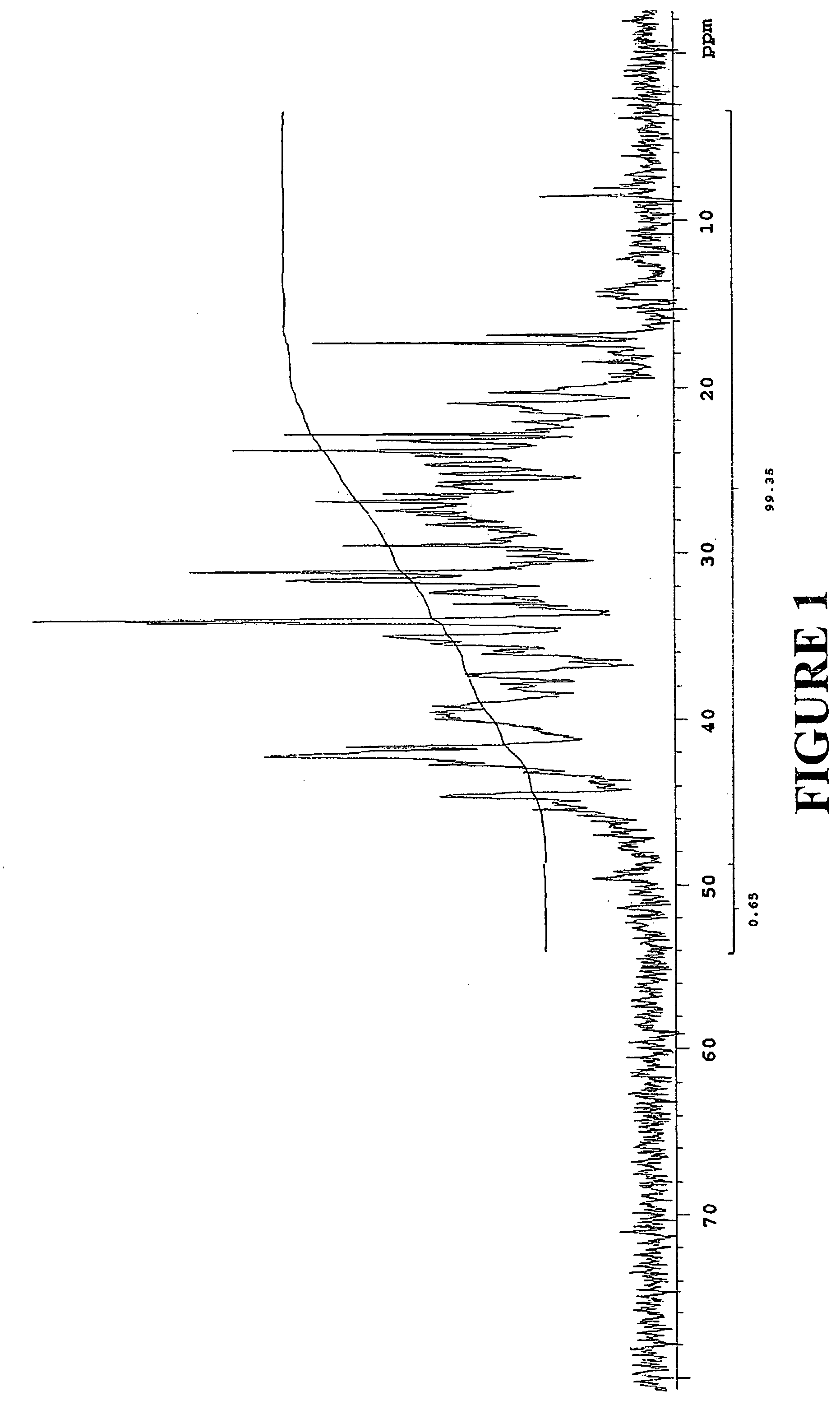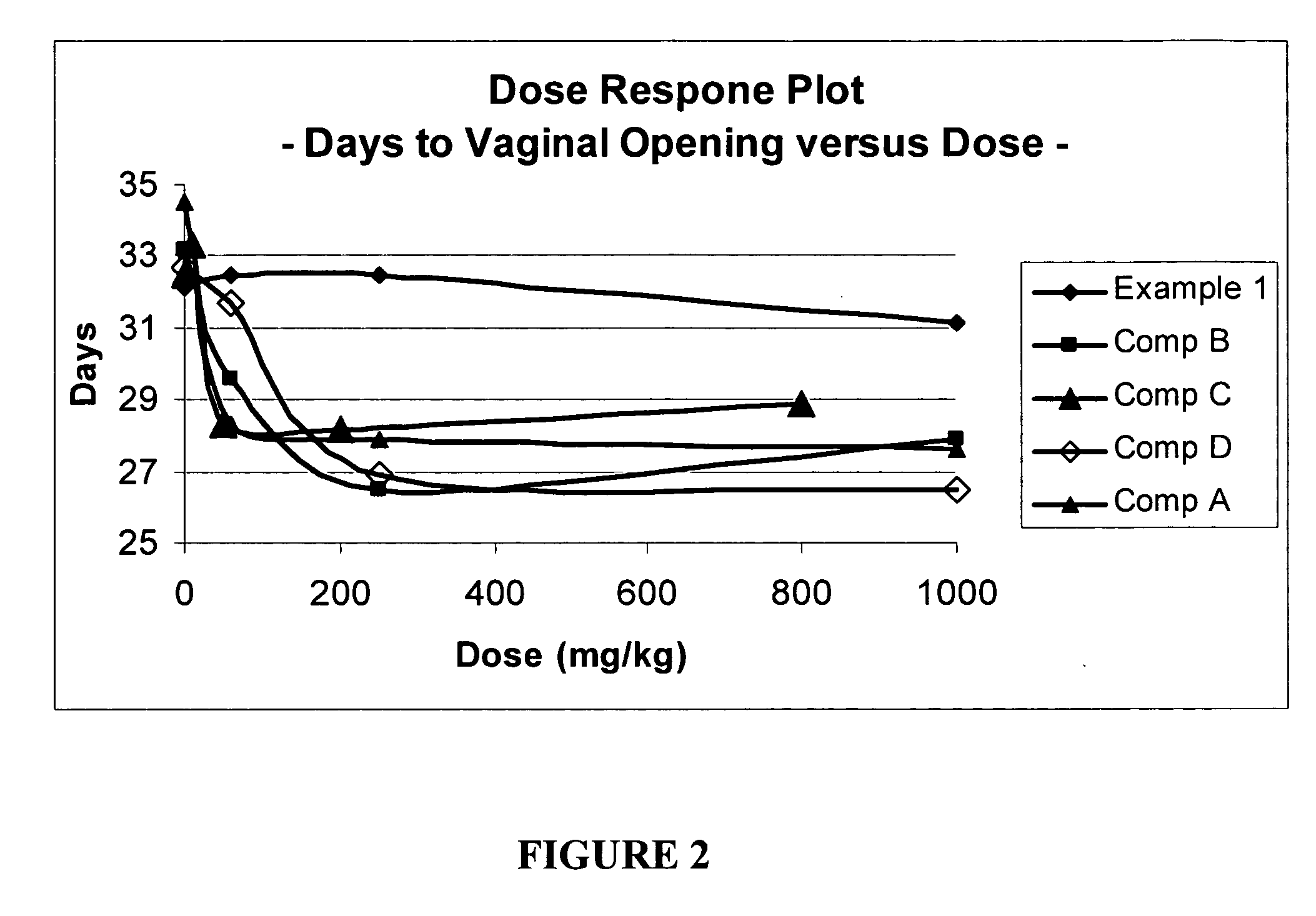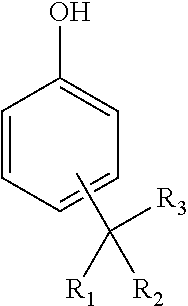Alkylated hydroxyaromatic compound substantially free of endocrine disruptive chemicals
a technology of endocrine disrupting chemicals and alkylated hydroxyaromatic compounds, which is applied in the direction of organic chemistry, lubricant compositions, fuels, etc., can solve the problems of poor biodegradability, altering the body's ability to produce hormones, and altering the concentration of hormones reaching the hormone receptors
- Summary
- Abstract
- Description
- Claims
- Application Information
AI Technical Summary
Problems solved by technology
Method used
Image
Examples
example 1a
[0124]Preparation of Trimethylammonium Chloroaluminate Ionic Liquid Catalyst
[0125]To a 1000 ml, dry, three neck glass round bottom flask fitted with a mechanical stirrer, thermometer and water cooled reflux condenser was added 67.2 grams (0.7 moles) of trimethylammonium hydrochloride. This was heated to 105° C. under vacuum (400 mm Hg) for about 65 hours and then allowed to cool to room temperature under a nitrogen atmosphere. To the hydrochloride salt was added 187.8 (1.4 moles) of aluminum trichloride in several portions under nitrogen over about 30 minutes with stirring while the temperature of the contents of the flask increased to 103° C. The reaction was then heated to about 70° C. and stirred for 2 hours and 10 minutes and then cooled to room temperature under nitrogen. The liquid trimethylammonium chloroaluminate ionic liquid was kept under nitrogen until use.
example 1b
[0126]Oligomerization of Propylene with Ionic Liquid Catalyst in a Continuously Stirred Flow Reactor
[0127]To a clean, dry, approximately 1 liter, jacketed glass reactor connected to an external chiller / heater and equipped with a bottom drain valve and fitted with a mechanical paddle stirrer, thermometer, fitted glass inlet at the bottom of the reactor and a water cooled condenser fitted with a rubber serum stopper and a hypodermic needle vent was added approximately 195 grams of the ionic liquid catalyst of Example 1A and approximately 150 ml of hexane. The stirrer was turned on at high speed and the external chiller / heater was set to 55° C. Propylene gas was introduced through the gas dispersion tube at 0.2-0.4 liters / minute for approximately 8 hours while the reactor temperature varied between 55° C. and 61° C.
[0128]At the end of this 8 hour time period, the stirrer and propylene gas addition was stopped and the ionic liquid catalyst was drained from the reactor followed by the he...
example 1
[0131]Preparation of Propylene Oligomer Alkylphenol
[0132]A 2-liter glass, 4-neck, round bottom flask fitted with a mechanical stirrer, water condenser, liquid addition funnel and thermometer was charged with 268.9 gm (2.86 moles) of phenol under a nitrogen atmosphere. The temperature of the reaction was raised to 130° C. with agitation and approximately 6.7 gm of trifluoromethane sulfonic acid was added dropwise via syringe (the reaction mixture turned an orange color) followed immediately by 787 gm (approximately 0.95 moles) of the propylene oligomer of Example 1B via an the addition funnel. The reaction mixture was held at 130° C. for 2 hours and then cooled to room temperature, diluted with 1 liter of hexane and washed with aqueous saturated sodium bicarbonate solution. The organic layer was dried over anhydrous magnesium sulfate, gravity filtered and the solvent removed under vacuum with to afford 806 gm of a brown oil. A portion (775 gm) of this brown oil was fractionally vacuu...
PUM
| Property | Measurement | Unit |
|---|---|---|
| Fraction | aaaaa | aaaaa |
| Fraction | aaaaa | aaaaa |
| Fraction | aaaaa | aaaaa |
Abstract
Description
Claims
Application Information
 Login to View More
Login to View More - R&D
- Intellectual Property
- Life Sciences
- Materials
- Tech Scout
- Unparalleled Data Quality
- Higher Quality Content
- 60% Fewer Hallucinations
Browse by: Latest US Patents, China's latest patents, Technical Efficacy Thesaurus, Application Domain, Technology Topic, Popular Technical Reports.
© 2025 PatSnap. All rights reserved.Legal|Privacy policy|Modern Slavery Act Transparency Statement|Sitemap|About US| Contact US: help@patsnap.com



